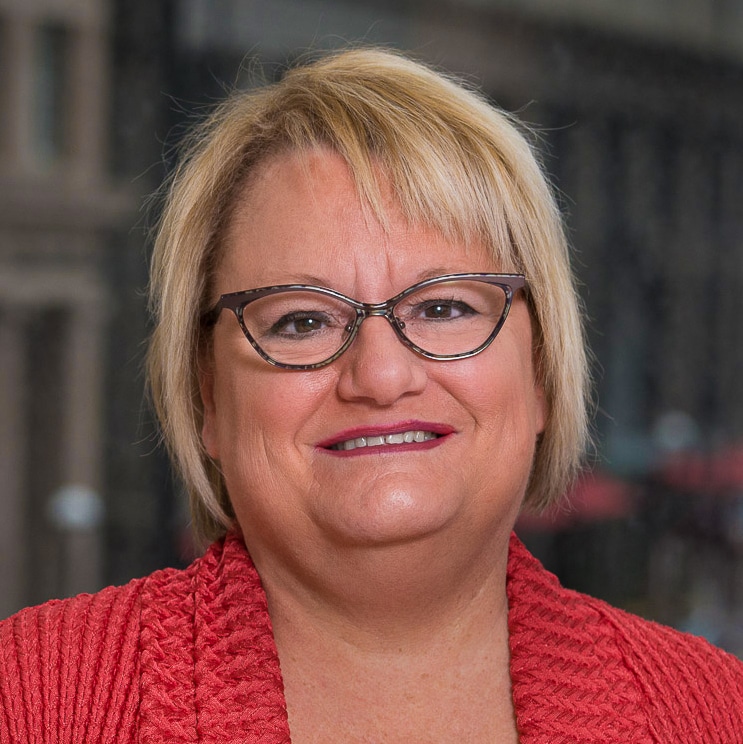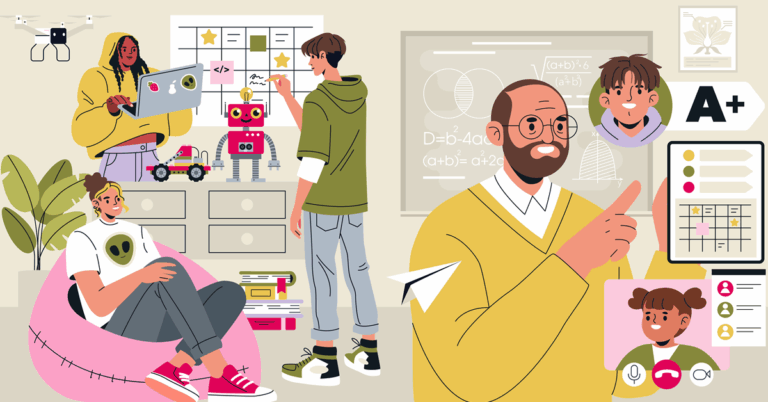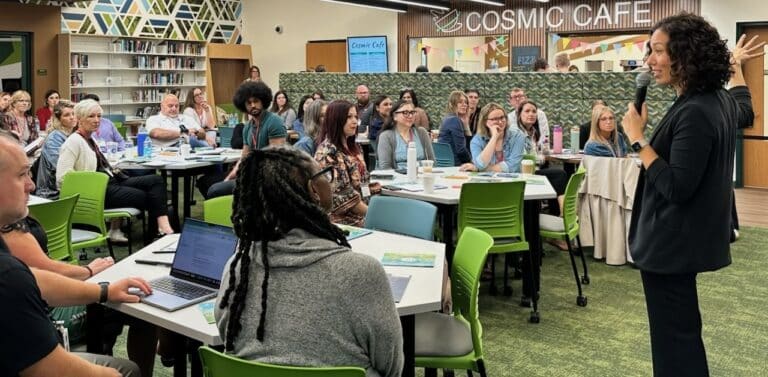Rhonda Rose is a seventh-grade math teacher at Batesburg-Leesville Middle School in South Carolina, and she’s been a part of the district’s work to design and implement Learning Pathways as they rethink teaching and learning to be more personalized and student-centered. As Rhonda and other educators engage in this process, they began with looking at the content standards and determining the critical or priority standards and indicators. They’re making adjustments in real-time because it’s not a checklist – it’s an iterative process. They’re constantly thinking and rethinking – and there’s no one better suited to describing just what personalized, competency-based learning looks like in a classroom than a classroom teacher.
How did educators at Lexington 3 School District identify critical, supplemental and helpful standards, and how has that changed the way they assess learning?
Read more >
Rhonda shared her experience recently during a virtual professional development session, answering a few key questions to help others interested in making similar shifts in their own districts and classrooms.
Why was it important to prioritize the standards and build out learning pathways / progressions?
Kids don’t come into your classroom at the same place. One student may know how to multiply and divide fractions, and another maybe can barely write a fraction. Progressions allow us to group kids in ways that set them up for success, that meet them where they are so they’re learning what they need to do move on to the next level, and the next level after that. When we started this process, we needed to talk a lot about our learners: what do they know, where are they at, how do we move them where they need to go?
Do the kids have any data tracking or goal-setting sheets?
We give pre-assessments that include questions for the four areas we are measuring for: emerging, developing, proficient and extending. There are a couple of questions in each section. Kids know we’re just using this as a knowledge-gathering tool; there’s no stress. They feel more confident putting down what they know and they’re not surprised when we assign them to a pathway.
We look at the pretest together and we talk about that. They’re aware of where they’re starting, why they’re starting there and we set a goal – if you can move from this level to the next level, you’ve made growth. Two levels? Incredible growth. If you’re in extending? We might put you in an eighth-grade standard.
It gives them some excitability. They know what they have to do along their pathway to get to proficient.
How has this has impacted your teaching, now that you’re no longer teaching just one thing to everybody in the room?
At first I did some pre-teaching on general, middle of the road concepts before giving out different assignments based on where students were in their pathway. But kids were rushing to get to the formative assessment and they weren’t taking as much ownership.
Now we’re getting into our pathways almost right away. Each pathway has similar activities that explore what they need to do – some videos they can watch and take notes on, some practice, some discussion; it’s a prescribed set of things they’re working on that they choose from. I get the opportunity to check as they go and they’re doing more self-checking of their practice so when they get to the formative assessment, they’re passing it.
I’ve moved to tables. I don’t do any more direct teaching to the whole class. I keep a list of who is where and what they’ve completed, and I pull small groups as needed. That seems to be working so much better. With that small group we’ll talk about what they’ve learned in their pathway and I’ll do some direct teaching or helping before letting them return to work. Then I’ll move on to the next small group.
You can do all that in 45 minutes?
Yes.
How has this shift in your teaching affected your job satisfaction, and what’s been the impact on the kids?
It was hard letting go of the direct teaching. But now I’m getting in my groove; this is a personalized learning classroom. Once I gave up that control, it was good. The kids have accepted that this is the way the classroom is run. They feel more comfortable asking questions in small group, getting up to get their answer key to check their own work. There’s more ownership for them doing their own thing, in their own time, in their own way, and they like that.
Do you feel like they’re all working towards proficiency?
I do. What’s been interesting to see is, some kids are strong in one area, and not in another. They have watched each other, and they see that they’re in different pathways based upon what they’re working on. The confidence they gain in different units, in where they’re starting, and where they’re heading. That’s life. We’re all good at some things and not in others. But we’ve got support. We’ve got help. And they help each other.
Best advice for other educators beginning the work of personalized, competency-based learning?
We as teachers stress ourselves out so much over control, making sure every single minute is filled, making sure our students are disciplined. But I haven’t had a single issue with discipline since beginning personalized learning. There’s a few times where I’ve had to redirect, but as far as discipline, just saying, “No, I’m not going to do it,” my students are too proud to do that. They want to continue on their pathway and see how far they can get. I did not expect that.
South Carolina Personalized Learning Coach Kristen Logan explains how to use learning pathways according to South Carolina’s Framework for Personalized Learning.





